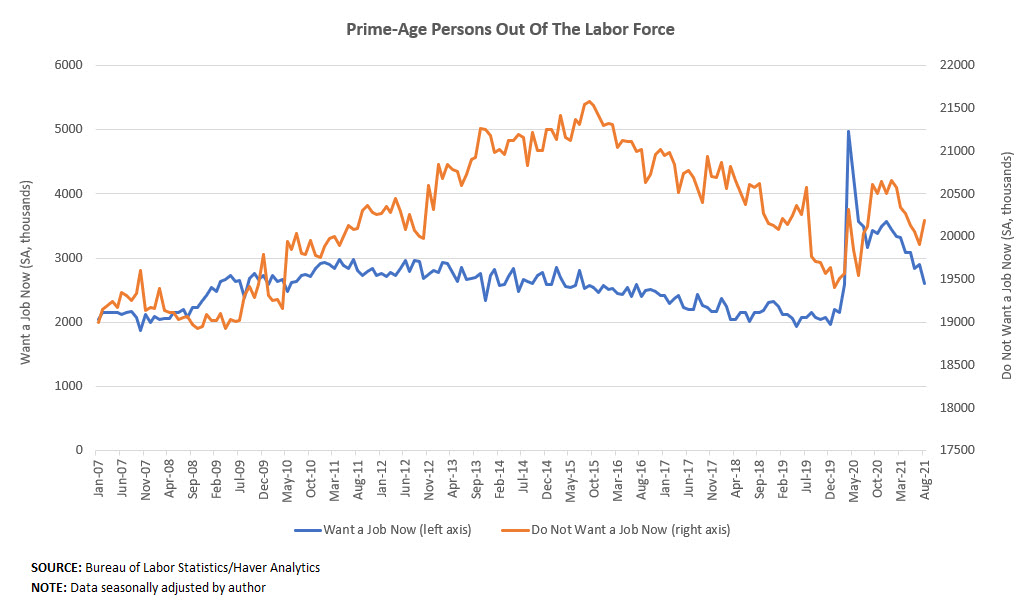Working or the Weekend?
Has the pandemic caused people to reconsider the trade-off between labor and leisure? August's employment report was the weakest since January: Only 235,000 jobs were added to nonfarm payrolls. The report also showed labor force participation continues to lag relative to before the pandemic. Overall participation was 61.7 percent, flat from its July reading and lower than the 63.3 percent participation rate observed in February 2020. It has fluctuated between 61.4 and 61.7 percent since June of last year, in contrast to other economic indicators like GDP and employment, which have more noticeably improved from their early-pandemic lows.
"... As long as [the marginally attached] continue to report that they want to work, their presence will factor into the Fed's assessment of labor market slack and bolster the argument that the labor market recovery has further room for improvement."
There could be multiple explanations for why more people are staying on the sidelines compared to the pre-COVID-19 days, such as increased child care responsibilities, early retirements, or government support enabling some people to delay their job search. But another reason, which we consider in this post, could be that some people have reconsidered the costs and benefits of working.
The Bureau of Labor Statistics Current Population Survey (CPS), a primary source of employment, labor force and earnings data, asks those who are not in the labor force (i.e., those who have no job and who are not looking for work) whether or not they want a job. To hone in on whether attitudes toward those working have shifted — as distinct from people's decisions to retire early (which would mostly affect older people) or to go to school (which mostly affects younger people) — Figure 1 below looks at the responses to this question for prime-age people (ages 25-54) who are out of the labor force. As of August, the total number of prime-age people not in the labor force is 5.2 percent higher than the February 2020 pre-pandemic level. Of that group, we've seen increases both in those who want a job (up 20.6 percent to 2.6 million) and those who do not want a job (up 3.5 percent to 20.2 million). But because overall, the rise has been sharper in the number that do want a job, it's hard to attribute the growth in nonparticipation to a shift in attitudes toward those working.
But what's keeping these people from looking for work, if that's indeed what they want? Again, the answer is unclear. Most of those prime-age people who are not in the labor force but want to work are considered "marginally attached" — they are available for work, and have looked for a job in the prior 12 months, but not in the four weeks before the survey was conducted. The CPS asks these people reasons why they are not currently searching for a job. Responses for prime-age marginally attached people are shown in Figure 2 below, indicating that a large part of the increase in this group is attributable to "Other" reasons.
Maybe this "Other" category includes some people who have had second thoughts about whether they want to continue toiling in their previous line of work and are taking a break, but for whatever reason, they can't bring themselves to check the "I don't want a job at this time" box. COVID-19-related reasons that aren't captured by the other categories may be boosting the number of "other" responses as well — the U.S. Census Bureau's weekly Household Pulse survey continues to point to COVID-19-related reasons as a significant factor keeping people from working. But as long as these people continue to report that they want to work, their presence will factor into the Fed's assessment of labor market slack and bolster the argument that the labor market recovery has further room for improvement.
Views expressed in this article are those of the author and not necessarily those of the Federal Reserve Bank of Richmond or the Federal Reserve System.



